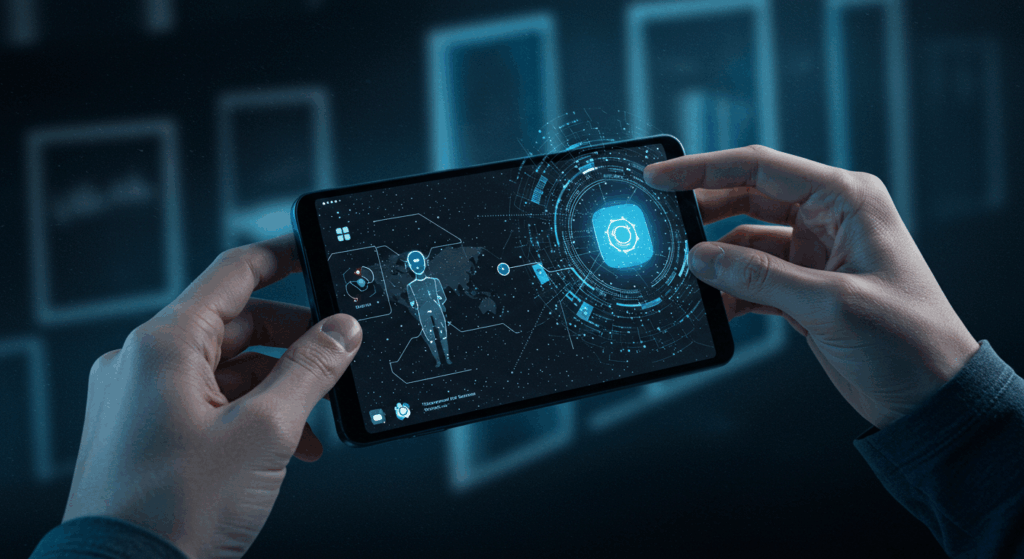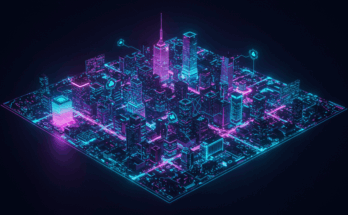The year 2025 is a landmark for technology, with breakthroughs that are reshaping how we live, work, and interact with the world. From AI that acts autonomously to sustainable energy solutions powering our digital future, the latest innovations are both thrilling and transformative. As a tech enthusiast, I’ve explored the standout trends set to dominate 2025, delving into their features, potential, and real-world impact. This article reviews the most exciting advancements, offering insights into how they’re redefining industries and enhancing user experiences. Whether you’re a gadget lover or a business leader, here’s a deep dive into the technologies driving the future.
Agentic AI: The Rise of Autonomous Intelligence
What Is Agentic AI?
Agentic AI is stealing the spotlight in 2025, evolving beyond the chatbots we’ve known. Unlike traditional AI, which responds to prompts, agentic AI systems are autonomous “agents” that can plan, make decisions, and execute tasks with minimal human input. Imagine a virtual assistant that doesn’t just answer your questions but schedules your meetings, books your travel, and even negotiates contracts on your behalf. Gartner has named agentic AI the top tech trend for 2025, highlighting its ability to handle enterprise tasks independently, from automating customer service to optimizing complex workflows.
Why It Matters
The appeal of agentic AI lies in its ability to enhance productivity while reducing human oversight. For businesses, this means faster decision-making and streamlined operations. For example, in healthcare, agentic AI is being used to analyze patient data and suggest treatment plans in real time, improving outcomes. However, it’s not without challenges—ethical concerns around autonomy and accountability are sparking debates. Can we trust AI to make decisions without human bias creeping in? Despite these hurdles, the potential for agentic AI to transform industries is undeniable, making it a game-changer for 2025.
Neuromorphic Computing: Mimicking the Human Brain
A New Era of Computing
Neuromorphic computing is redefining how machines process information. Designed to mimic the human brain’s neural networks, this technology processes data in parallel, unlike traditional sequential computing. In 2025, neuromorphic chips are gaining traction for their energy efficiency and speed, particularly in AI-driven applications. These chips excel at tasks such as pattern recognition and real-time data analysis, making them ideal for applications ranging from autonomous vehicles to smart home devices.

Real-World Impact
The user experience with neuromorphic computing is seamless. For instance, smart cameras powered by neuromorphic chips can instantly recognize faces or objects, enhancing security systems. Their low power consumption also makes them a sustainable choice for data centers, which are under pressure to reduce energy use. However, the technology is still in its early stages, and high development costs could slow adoption. Still, companies like Intel are pushing boundaries, and neuromorphic computing is poised to revolutionize AI performance in 2025.
Extended Reality (XR): Blurring Physical and Digital Worlds
Immersive Experiences Redefined
Extended Reality (XR), encompassing virtual reality (VR), augmented reality (AR), and mixed reality (MR), is transforming how we interact with digital content. In 2025, XR is poised to move beyond gaming into education, retail, and professional training. Picture a medical student practicing surgery in VR or a mechanic using AR glasses to overlay repair instructions on a machine. These immersive experiences are engaging, efficient, and error-reducing, particularly in high-stakes fields.
Why XR Stands Out
The user experience with XR is unparalleled—vivid visuals, intuitive controls, and real-time feedback create a sense of presence that traditional screens can’t match. For example, retailers are using AR to let customers “try on” clothes virtually, boosting engagement and sales. Yet, challenges like high device costs and motion sickness in VR persist. As hardware improves and prices drop, XR’s accessibility is set to soar, making it a must-watch trend for 2025.
Nuclear Energy for Tech: Powering the AI Boom
The Energy Challenge
The explosive growth of AI and data centers has created an unprecedented energy demand. In 2025, nuclear energy is emerging as a clean, reliable solution to power these high-energy technologies. Tech giants like Microsoft and Google are investing heavily in small modular reactors (SMRs), which are safer and more scalable than traditional nuclear plants. These advancements promise to meet AI’s energy needs while reducing carbon footprints.
Benefits and Hurdles
Nuclear-powered data centers could ensure uninterrupted performance for cloud-based services, delivering a smoother user experience for everything from streaming to AI applications. Innovations in waste management and reactor safety are addressing long-standing concerns; however, public skepticism and regulatory hurdles persist. Still, the push for sustainable energy makes nuclear a critical player in 2025’s tech landscape, balancing power demands with environmental responsibility.
Sustainable Tech: Green Innovations for a Better Future
The Drive for Sustainability
Sustainability is no longer a buzzword—it’s a necessity. In 2025, green technologies like energy-efficient computing and carbon capture systems are gaining momentum. For instance, advancements in battery technology are improving energy storage for renewables, ensuring a stable power supply for smart devices. Meanwhile, biotech innovations like CRISPR gene editing are enhancing crop yields, addressing food security in a warming world.
User-Centric Benefits
For consumers, sustainable tech means eco-friendly gadgets with longer battery life and lower energy costs. Imagine a smartphone that charges faster and lasts days, thanks to next-gen batteries. Businesses also benefit, with energy-efficient data centers reducing operational costs. However, scaling these technologies globally remains a challenge, as does ensuring equitable access. As investment in climate tech grows, 2025 is shaping up to be a pivotal year for sustainable innovation.
FAQ
What is the most impactful technology trend in 2025?
Agentic AI stands out as the most impactful trend, according to Gartner, due to its ability to autonomously perform tasks and enhance productivity across various industries, including healthcare, finance, and customer service.
How does neuromorphic computing differ from traditional computing?
Neuromorphic computing mimics the human brain’s neural structure, processing data in parallel for greater speed and energy efficiency, unlike traditional computing’s sequential approach.
Is XR only for gaming?
No, XR (VR, AR, MR) is expanding into education, retail, and professional training, offering immersive experiences like virtual surgeries or AR-enhanced shopping.
Why is nuclear energy essential for tech in 2025?
Nuclear energy, tiny modular reactors, offers a clean and reliable power source for AI-driven data centers, addressing the massive energy demands of modern technology.
How does sustainable tech benefit consumers?
Sustainable tech offers eco-friendly devices with improved battery life and lower energy costs, while innovations like carbon capture and biotech enhance environmental and food security.



